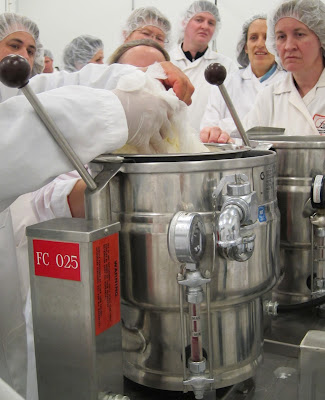Flavourful Saskatoon, March 23, 2020
“If we want the local food system to survive, we need to buy from local producers right now. For those who have been thinking about eating more locally and have the money to do it, now is the time to try it out.” (Marjorie Williams)
Keep Calm and Eat
Individuals and small businesses are showing so much creativity and determination in face of the rapid changes brought about by Covid-19. It’s impossible to list every effort, but here are a few. The Saskatoon Farmers’ Market has set up an online store and pickup and delivery system. There is also a province-wide list of restaurants, caterers doing home-style meals, food shops providing deliveries during the pandemic. Others are finding safe ways to provide takeout.
This is very much in line with how European communities coped during the plague: “Medieval Europeans became accustomed to locking cities down in order to contain outbreaks of plague. My favourite example comes from Miquel Parets, a tanner in Barcelona, who wrote a diary in 1651 in which he describes what life was like inside that city in a plague year. It is the small changes to everyday occurrences that are most telling. Merchants selling food would stand outside the city gates and put their wares on long paddles. The citizens would take the victuals, put coins on the paddle in exchange, and then go back home. Each transaction was accomplished without anyone having to get close enough to spread the infection.” (from The Economist’s newsletter, Checks and Balances)
Here are some tips for eating well during the pandemic:
The lockdown larder (from kimchi and marmite to peanut butter and baked beans)
Cooking tips for self-isolation (fresh food and bread-making)
5 easy-to-reheat dishes to cook for your neighbours
Adding flavour without the onions and garlic
Food for Thought
I’d be interested in reading Local is our Future: Steps to an Economics of Happiness by Helena Norberg-Hobb. She says, “ ‘Localisation isn’t about returning to the past. Instead, it asks us to recognise what older cultures often did well: they relied on local resources and local knowledge to meet people’s material needs, and as a result, did so with a minimum of environmental impact.’ She goes on to explain how closer community ties also mean there’s more chance of fulfilling mental health needs such as a feeling of connection and security.”
And, for something completely different: the top-secret feminist history of tea rooms: “The tavern and hotel scenes were dominated by men. Women weren’t welcome in some places at all, and only with a man in others. The tea room, so often either a home or a homelike environment, gave women chances to dine out—whether she was a working woman on a lunch break, taking a break from shopping, or touring with friends in the newly invented automobile. Women felt comfortable in these restaurants, which prided themselves on serving lighter, fresher fare than the heavy meat-and-potatoes coursed meals served at restaurants and hotels.”
Flavourful Saskatoon is a weekly Monday feature. I also post articles about food that is good, clean and fair; travel; and books. You may also enjoy EcoFriendly Sask profiling Saskatchewan nature/environmental initiatives and events.
You can follow Wanderlust and Words on Facebook, Twitter, or by email (top right corner).






Comments